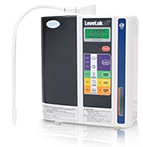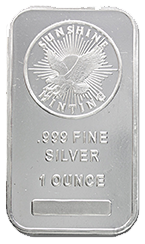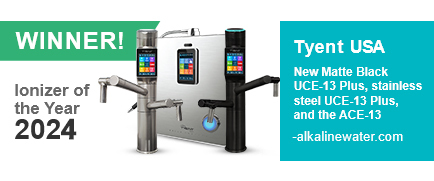Poisonous Water Ionizer Plates: Fact or Fiction?
Poisonous plates
Fact or Fiction

Poisonous Plates: Exposing the Lies & Uncovering the Truth
The rumors are all too familiar; “They say that the titanium plates of this ionizer are POISONOUS!” Or, “My uncle’s, friend’s, sister-in-law’s, husband knows someone that was probably harmed by the MELTING plates from that brand of ionizer!” Most people hear the rumors and want to know which ionizer has the safest plates. We, on the other hand, hear the rumors and wonder which uneducated people started them.
As plate technology is quickly becoming the most talked about topic in the water ionization industry, the goal of this page is to break down the specifics and separate the facts from the fiction. To begin…
Un-learning What You Think You Know
| 1) The Myth of Mesh: | The #1 visual scare tactic used by solid plate manufacturers to misinform the public is done by comparing mesh plates to that of window screens. The screen is flimsy, brittle and lacks structural integrity. Mesh plates are solid titanium – a characteristic not at all shared with screens. |
| 2) Plates DON’T Melt: | The ionizers that we review all use titanium plates. Any grade-school scientist could probably tell you that the melting point of titanium is over 3,000 degrees Fahrenheit. If an ionizer could reach this temperature, we’d be more worried about a kitchen catching on fire than drinking alkaline water from an ionizer. |
| 3) Exposed Titanium is NOT Poisonous: | In your research, you’ll learn about platinum plating vs. dipping and/or spraying plates with platinum. The importance of platinum will be explained later; the argument that dipping or spraying platinum leaves harmful, exposed titanium is FALSE. Titanium is the most bio-compatible metal known to man. This is why it is used in metal plates, implants, joint replacements and other medical procedures with FULL exposure to the interior of one’s body. |
Introducing the Plates: Solid vs. Slotted vs. Drilled (Hybrid)
The function of a water ionizer plate is very simple: conduct as much electricity as possible. Simply stated, the more electricity, the more effect on the water and minerals and the greater ionization benefit for you. The leading ionizers in the industry currently use the following plate designs: solid – “flat”, slotted – commonly referred to as “mesh”, and drilled-hybrid – a strategic combination of the two other designs.

Understanding Plate Design & Electrical Conductivity Area (ECA)
In 1831, world-renowned electrical engineer Michael Faraday invented the magneto (similar to an electric generator), based upon a series of principles that proves electricity prefers edges. An example of these principles explains why lightning rods have a sharp point to attract lightning bolts. Without confusing you and going too in depth, the significance of these principles plays into the ultimate ionization benefit of the ionizer depending on plate design. Electrical Conductivity Area, or ECA for short, is the measure of the ionization potential of the plates. The higher the ECA, the better the results!

Solid Plates:
The solid plate, used stubbornly by Enagic’s Kangen water ionizer, is based upon first-generation technology. The Enagic ionizer hasn’t evolved since its introduction and the plates do not incorporate Faraday’s basic principles of conductivity. This is because the plate is big and smooth, lacking the necessary edges to increase the ECA. The solid plate design of the Enagic SD-501 has an ECA of only 246cm².
Plate Material and Composition

Every ionizer considered for review must meet a minimum set of requirements. In terms of plate material and composition, we only review ionizers whose plates are made from titanium and either plated or coated with platinum. In fact, every ionizer we review is also registered as a medical device in its country of origin, specifically Korea and Japan.
Titanium is used because it’s the most bio-compatible metal, used almost exclusively in hip and joint replacements. Contrary to rumors, none of the plates melt or crumble. In fact, the perimeter of every water cell is plastic and chances are good the plastic might melt before the titanium or platinum does.
Platinum is used to enhance conductivity. The notable difference, however, is in how the plates are coated. Enagic uses a plating process that applies platinum smoothly and evenly across the entire plate. Other manufacturers use a specialized dip and spray application, which leaves the surface rough to the touch. Slotted and hybrid plates are cut to size, the slots or drilled pattern is cut, and then the plates are finally dipped and sprayed with platinum. Take a look at how these variations affect the plate’s surface area

Under 100 times magnification, the image of the solid plate on the left is much smoother than the magnified image of the sprayed plate on the right. Although the dip and spray process increases the surface area and conductive efficiency of the plate, it is not considered when calculating total plate ECA. The platinum spray process is now used now by most manufacturers to create a more complete ionization process.
Do not be fooled by manufacturers that argue they use “THOUSANDS” of dollars worth of platinum or that their method of plate application uses “SIGNIFICANTLY MORE” platinum than another method. Platinum is very expensive – the differences in amounts used for separate application methods varies by fractions of a dollar!
Medical Grade Titanium & Platinum
Another term haphazardly tossed around the water cooler when discussing plates is “medical grade”. One manufacturer claims that it uses specialized platinum or titanium costing “thousands of dollars in each machine!” Its amazing that the machine costs less than the platinum used in their design, right? Sounds like a sure-fire investment opportunity!

Well, consider an ounce of silver. Silver is an element, just like platinum and titanium. There is no such thing as “medical grade” or “surgical silver”, the same way there is no such thing as medical-grade titanium
An element is either an element or not, but it can’t be both. Instead, that’s called an “alloy”. You’ve probably heard of “surgical steel.” This designation is appropriate since steel in an alloy and the quality of the alloy can be measured. If a plate is made of titanium and coated or plated with platinum, and is used in an ionizer approved by its country’s medical authority, you can be certain it uses manufactured components that are both safe and effective.

Why Does This All Matter?
Rumors are dirty, vicious and more often than not, false. All of the ionizers reviewed on this website use plate technology that is durable, reliable, safe AND medically approved. There are many ways to compare water ionizers and lots of features to evaluate. But I can’t stress this enough: Avoid making a decision based on plate rumors! Slotted & hybrid plates are technologically superior to less expensive and outdated solid plates and are certain to provide your family decades of safe and reliable service.

3 Tips to Becoming a Dealer—My Story
Ever think about selling water ionizers? Wondering if there is money to be made? The truth is...
Read More 1-877-878-7220
1-877-878-7220 











3 Responses
DL Dabler says:
I have yet to commit to buying one of these. I have to say this website has giving me the confidence to make the right decision when I do. The information in here is more factual than hype. Thank you for answering questions I didn’t even have yet about the whole process of this kind of equipment.
Sarah says:
350 watts, Oh and at least 9 of something else. Which is it? Please elplain.
Sarah
Rachel Garner says:
Appreciate your information. Have gotten confused over the various claims of reviews regarding water ionizers. Ours is a LIFE IONIZER 7600. I’ve been recently warned that after a year or so of constant use, due to jewelry grade metal and other cheap materials(to save money), it has been known to “break down” and become a hazard to health. We’ve been using it for over two years. What is the scoop on this?